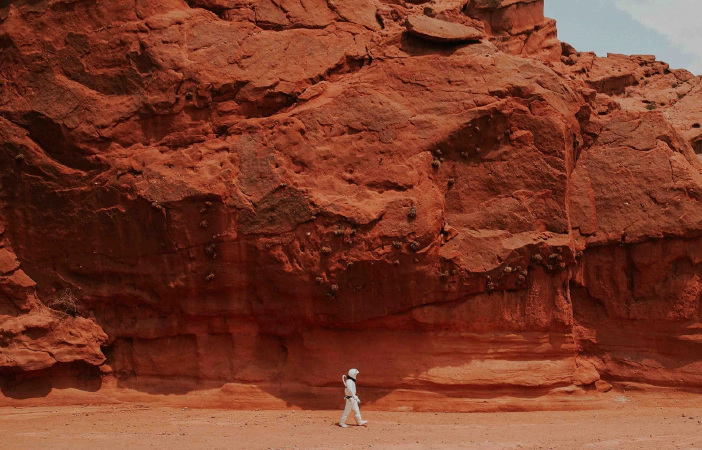
Are you ready to embark on a journey to the Red Planet?
Strap on your space helmet and let’s explore the psychological effects of living on Mars in “The Human Spirit vs. the Martian Atmosphere”. We’ll also delve into the challenges and opportunities for the human body, including dealing with reduced gravity and the impact of radiation. Get ready for a cosmic adventure that will ignite your sense of wonder and curiosity!
The Psychological Effects of Living on Mars
Living on Mars is a dream come true for many astronomers, but what would it be like to actually live on the Red Planet? The psychological effects of living on Mars are just as important as the physiological effects, and they are not to be underestimated.
The isolation and confinement that living on Mars would bring would have a profound effect on anyone, no matter how strong-willed they may be. People love to interact with others, and the lack of physical interaction could be a huge stumbling block for the early settlers on Mars. But this is not to say that the crew would be completely isolated from the outside world. They would be able to keep in contact with people on Earth through video conferencing, but the lack of face-to-face contact would be, in itself, a huge hurdle to overcome.
The lack of a day and night cycle on Mars would also have a profound effect on people’s circadian rhythms, which are the physiological and behavioral changes that happen in the body over a 24-hour cycle. This could lead to mood swings and disrupt normal sleeping patterns, which in turn could lead to lethargy and depression.
Living on Mars would also lead to an increased need for self-sufficiency, and the psychological effects of this should not be ignored. People would have to work together to grow their own food and produce their own water, which could prove to be a very rewarding experience for many people. But for others, this could be a daunting prospect, especially if they are used to having everything provided for them.
Finally, the psychological effects of the Martian environment should not be underestimated. The lack of sunlight, the constant threat of radiation, and the barren landscape could all add to the feeling of isolation and claustrophobia. It is essential that the crew is prepared for the psychological effects of living on Mars, as well as the physiological ones. Overall, living on Mars would be a huge challenge, but it could also be an incredible adventure.
Challenges and Opportunities for the Human Body
As humans venture beyond our planet, we face a host of challenges and opportunities for our fragile bodies. Reduced gravity and radiation exposure are just a few of the physiological hurdles we must overcome in order to thrive in extraterrestrial environments. Let’s explore these obstacles and the potential solutions that could unlock our species’ interplanetary destiny.
Dealing with Reduced Gravity
Dealing with reduced gravity is one of the many challenges that astronauts face when traveling through space or even living on Mars. The human body is designed to function under the constant pull of Earth’s gravity, so when exposed to reduced gravity for an extended period of time, it can lead to a wide range of physical changes.
For one, without the constant pull of gravity, bones and muscles begin to lose mass and density, resulting in muscle atrophy, decreased bone density, and an increased risk of fractures. To combat this, astronauts are required to participate in a strict exercise regimen while in space, making sure to target the muscles and bones most affected by reduced gravity.
Another issue that humans face in reduced gravity is cardiovascular changes. The human heart is used to pumping blood against gravity, so when there is less gravitational force, the heart doesn’t have to work as hard. This can lead to a decrease in overall cardiovascular fitness and can even cause changes in blood pressure and heart rate.
Finally, reduced gravity can also affect the fluid balance within the human body. Fluids tend to shift towards the head in reduced gravity, leading to a puffy face and swollen limbs. While this may not seem like a significant issue, it can cause discomfort and increase the risk of infection. To counteract this, astronauts are required to drink extra water while in space and wear special garments that put pressure on their legs to help push fluids back towards their feet.
In conclusion, dealing with reduced gravity is no small feat when it comes to space exploration. However, through a combination of exercise, careful monitoring, and specialized equipment, humans can adapt to this new environment and continue to push the boundaries of what we know about space.
The Impact of Radiation on the Human Body
When we think of space travel, we often imagine astronauts floating weightlessly through the cabin of a spacecraft. But living in space means more than just experiencing zero gravity. One of the biggest challenges facing space explorers is exposure to radiation.
Radiation is all around us, but the Earth’s atmosphere helps shield us from its harmful effects. In space, however, there is no such protection. Astronauts are bombarded by high levels of radiation from the sun and other sources.
The most dangerous form of radiation comes in the form of ionizing particles, such as protons and heavy ions. These particles can penetrate deep into the body and damage DNA, potentially leading to cancer and other health problems.
So how do we protect astronauts from radiation? One option is to shield spacecraft with heavy materials like lead or tungsten. But this approach has its limits, as it adds significant weight to the spacecraft and may not provide sufficient protection against all types of radiation.
Another approach is to develop new drugs that can protect against the effects of radiation. Some promising candidates are already being tested on Earth, and could one day be used to help protect astronauts on long-duration missions.
But until we find a more effective way to shield against radiation, space travel will continue to pose a significant risk to the human body. It’s a reminder of just how harsh and unforgiving the space environment can be - and of the remarkable resilience and adaptability of the human spirit in the face of such challenges.
